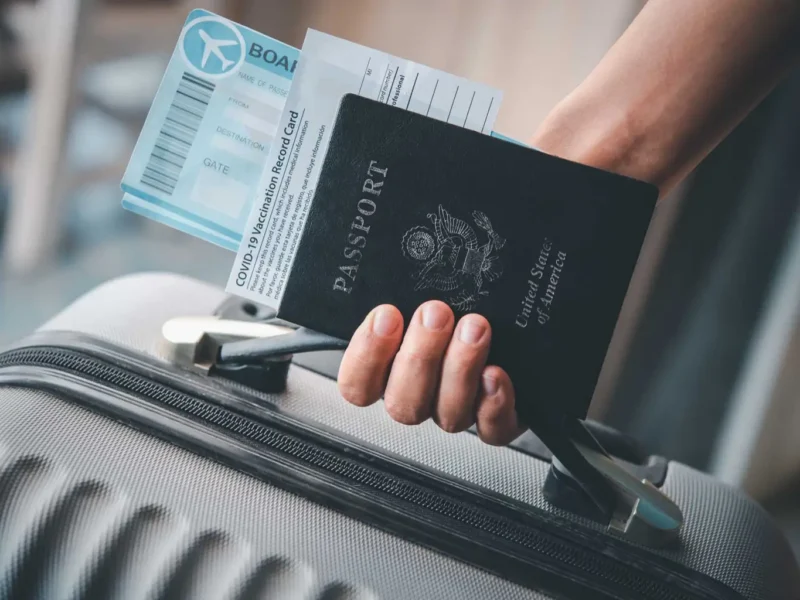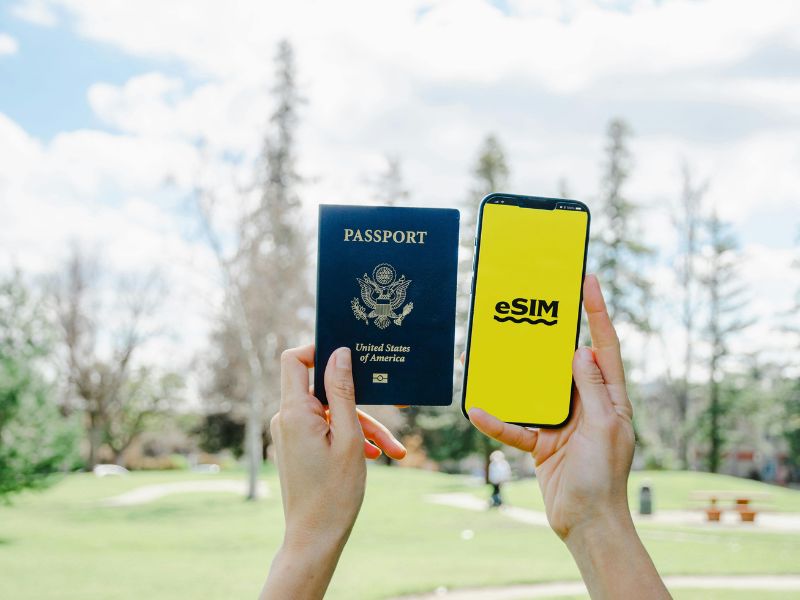The H1 visa, officially known as the H-1B visa, is a highly coveted work visa that allows skilled professionals from around the globe to work in the United States. Sponsored by U.S.-based employers, this visa is particularly popular in fields such as technology, healthcare, engineering, and finance, where specialized expertise is often in high demand. For many, the H1 visa serves as a stepping stone to building a successful career in the U.S., offering opportunities for professional growth and a chance to contribute to the global workforce.
However, securing an H1 visa sponsorship is no small feat. From understanding the process to meeting the eligibility requirements and navigating a competitive selection system, many factors come into play. This article provides a comprehensive guide to understanding what H1 visa sponsorship entails and the steps you can take to secure one. Whether you’re an aspiring professional or someone considering relocating to the U.S. for work, this guide will help demystify the process and set you on the path to success.
1. What is the H1 Visa?
-
The H1 visa, more specifically the H-1B visa, is a non-immigrant visa that allows foreign professionals to work in the United States temporarily in specialized fields. It is designed for jobs that require theoretical or technical expertise, such as positions in engineering, technology, finance, healthcare, mathematics, architecture, and other specialized areas.
Key characteristics of the H1 visa include:
Specialized Occupations: The visa is intended for jobs that require at least a bachelor’s degree or equivalent experience in a specific field. Common roles include software engineers, data scientists, accountants, and doctors.
Employer Sponsorship: The visa requires a U.S.-based employer to sponsor the applicant. The employer must prove that the job requires specialized skills and that the foreign worker is qualified to fill the role.
Temporary Status: The H1 visa is granted for an initial period of three years, which can be extended up to six years in most cases. Extensions beyond six years are possible under specific circumstances, such as when a green card application is in progress.
Annual Cap: The U.S. government sets a limit on the number of H1 visas issued each fiscal year. Currently, there are 65,000 visas available under the regular cap, with an additional 20,000 reserved for individuals with advanced degrees from U.S. institutions.
Dual Intent: Unlike many other non-immigrant visas, the H1 visa allows for “dual intent,” meaning that holders can apply for a green card while working in the U.S. without jeopardizing their visa status.
2. Understanding H1 Visa Sponsorship
H1 visa sponsorship is a crucial aspect of the H1B visa process, as it enables foreign professionals to work legally in the United States. Sponsorship occurs when a U.S.-based employer agrees to hire a foreign worker and takes on the responsibility of filing the necessary paperwork with U.S. immigration authorities. The employer essentially vouches for the worker’s qualifications, the necessity of their role, and their eligibility for the visa.
Here are the key aspects of H1 visa sponsorship:
Employer’s Role in Sponsorship
The employer is the cornerstone of H1 visa sponsorship. They must:
- File a Petition: The employer submits a petition to the U.S. Citizenship and Immigration Services (USCIS) on behalf of the foreign worker. This includes filing Form I-129, Petition for a Nonimmigrant Worker.
- Labor Condition Application (LCA): Before submitting the petition, the employer must file an LCA with the Department of Labor. The LCA certifies that:
- The foreign worker will be paid at least the prevailing wage for the job.
- The employment of the foreign worker will not negatively impact the working conditions of U.S. employees.
Costs Involved in Sponsorship
Sponsoring an H1 visa is not free. Employers bear the financial burden of:
- Application fees.
- Attorney fees (if legal assistance is used).
- Filing fees for the LCA and Form I-129.
These costs cannot be passed on to the employee, as U.S. labor laws prohibit employers from deducting these expenses from the foreign worker’s salary.
Employer-Specific Nature of the Visa
H1 visas are tied to the sponsoring employer, meaning:
- The employee can only work for the sponsoring company.
- If the worker changes jobs, the new employer must file a new H1 visa petition (referred to as an H1B transfer).
- In cases where the employee loses their job, they must leave the U.S. unless they find another sponsor within a 60-day grace period.
Requirements for Sponsorship
Employers can only sponsor an H1 visa if:
- The job requires a specialized skill set or advanced knowledge.
- The candidate holds at least a bachelor’s degree or equivalent experience in the relevant field.
- The company can provide evidence that hiring a foreign worker is justified, especially if U.S.-based candidates cannot meet the job requirements.
Advantages for Employers and Employees
For employers, sponsoring an H1 visa allows them to fill critical skill gaps and stay competitive. For employees, it opens the door to a wealth of career opportunities in the U.S. while providing the potential for long-term residence through dual intent.
Eligibility Requirements for an H1 Visa
To qualify for an H1 visa, both the foreign worker and the sponsoring employer must meet specific requirements set by U.S. immigration authorities. These criteria ensure that the visa is granted only to individuals with the necessary skills and to jobs that genuinely require specialized expertise. Here’s a breakdown of the eligibility requirements:
Educational Qualifications
- Bachelor’s Degree or Higher: Applicants must hold at least a bachelor’s degree or its equivalent in a field directly related to the job.
- Equivalent Experience: In cases where the applicant does not have a degree, equivalent experience may be considered. Generally, three years of work experience is considered equal to one year of university education.
- Specialized Field: The degree or experience must be relevant to the specialized occupation (e.g., a degree in Computer Science for a software engineering role).
Specialized Occupation
The job must be classified as a “specialty occupation,” which requires theoretical and practical application of specialized knowledge. Common fields for H1 visa eligibility include:
- Information Technology (e.g., software developers, data analysts)
- Engineering (e.g., mechanical, civil, electrical engineers)
- Healthcare (e.g., doctors, physical therapists)
- Finance (e.g., accountants, financial analysts)
- Education (e.g., university professors, researchers)
The position must also require a bachelor’s degree or higher as a minimum qualification.
Employer Requirements
- Sponsorship: The employer must sponsor the foreign worker by filing a petition with USCIS. Self-sponsorship is not allowed.
- Labor Condition Application (LCA): The employer must file an LCA with the Department of Labor, certifying that:
- The foreign worker will be paid a wage equal to or greater than the prevailing wage for that occupation and location.
- Hiring the foreign worker will not adversely affect the working conditions of U.S. employees.
- Job Offer: The employer must offer a legitimate job to the foreign worker that requires the specific skills and qualifications they possess.
Cap and Lottery Eligibility
- Annual Cap: The U.S. government issues a limited number of H1 visas each year—65,000 under the regular cap and an additional 20,000 for applicants with advanced degrees from U.S. institutions.
- Lottery System: Due to high demand, most H1 visas are allocated via a random lottery selection if applications exceed the cap.
Proof of Qualifications
Applicants must provide documentation to prove their eligibility, including:
- Educational credentials (e.g., diplomas, transcripts).
- Work experience letters to demonstrate specialized knowledge.
- Certifications or licenses are required for certain professions (e.g., medical licenses for doctors).
Worksite and Wage Requirements
- The job must be located in the United States, and the employer must pay the worker at least the prevailing wage for the position in the specific geographic area.
Dual Intent
Applicants must meet the H1 visa’s “dual intent” requirements. This means they can legally pursue permanent residency (green card) while working on an H1 visa without jeopardizing their visa status.
How to Secure an H1 Visa Sponsorship
Securing an H1 visa sponsorship can seem challenging, but with the right approach, preparation, and persistence, it’s achievable. Here’s a step-by-step guide to help you navigate the process:
Build a Strong Profile
To stand out to potential employers, you need to demonstrate that you have the skills and expertise they’re looking for.
- Educational Credentials: Ensure your qualifications align with the job you’re targeting. A bachelor’s degree or higher in a specialized field is a must.
- Relevant Experience: Gain hands-on experience in your field. Employers are more likely to sponsor individuals with proven skills.
- Certifications: Consider earning additional certifications or technical skills to boost your employability in specialized roles.
- Tailored Resume and Portfolio: Create a professional resume and portfolio that highlight your achievements and align with the requirements of U.S. employers.
Research Companies That Sponsor H1 Visas
Not all U.S. employers are willing or able to sponsor H1 visas, so focus your job search on companies with a history of sponsorship.
- H1B Employer Databases: Use online tools like MyVisaJobs or USCIS databases to identify companies that have previously sponsored H1 visas.
- Industries in Demand: Target industries with high demand for foreign talent, such as technology, healthcare, engineering, and finance.
- Networking: Connect with professionals on LinkedIn, attend industry conferences, and join professional organizations to learn about companies open to sponsorship.
Apply for Jobs Strategically
Once you’ve identified potential employers, focus on applying for positions that match your qualifications.
- Highlight Sponsorship Requirements: Be upfront about your need for H1 visa sponsorship in your cover letter or during interviews.
- Use Job Portals: Platforms like LinkedIn, Indeed, and Glassdoor often have filters for jobs that offer visa sponsorship.
- Leverage U.S.-Based Education: If you are already studying in the U.S., target jobs where employers might prioritize candidates with advanced U.S. degrees.
Secure a Job Offer
The most critical step in securing H1 visa sponsorship is landing a job offer from a U.S. employer willing to sponsor your visa.
- Once hired, the employer will start the H1 visa application process by filing a petition with USCIS on your behalf.
Navigate the H1 Visa Petition Process
After receiving a job offer, the sponsoring employer will handle most of the visa-related processes, but you’ll need to stay involved and provide necessary documentation.
- Labor Condition Application (LCA): The employer files this with the Department of Labor to confirm compliance with wage and labor requirements.
- Form I-129: The employer submits this petition to USCIS for approval.
- Visa Application: After USCIS approves the petition, you will need to attend a visa interview at a U.S. consulate in your home country.
The H1 Visa Application Process
The H1 visa application process involves several steps, requiring both the employer and the employee to fulfill specific requirements. It is a structured process designed to ensure that only qualified professionals in specialized fields are granted the visa. Below is a step-by-step guide to the application process:
Secure a Job Offer from a U.S. Employer
The first step in the H1 visa process is to secure a job offer from a U.S.-based employer. This employer will serve as your sponsor and initiate the visa application process on your behalf.
- Ensure the job qualifies as a “specialty occupation” that requires a bachelor’s degree or higher in a relevant field.
- Discuss the need for H1 visa sponsorship with the employer during the hiring process.
Employer Files a Labor Condition Application (LCA)
Before applying for the H1 visa, the employer must file an LCA (Labor Condition Application) with the U.S. Department of Labor (DOL).
- Purpose: The LCA ensures that the foreign worker will be paid at least the prevailing wage for their job and that hiring the worker will not negatively impact the wages or working conditions of U.S. workers.
- Key Details: The LCA includes information about the job title, location, salary, and working conditions.
- Approval Timeline: The LCA typically takes 7–10 days to process.
Employer Files Form I-129 (Petition for a Nonimmigrant Worker)
Once the LCA is certified, the employer submits Form I-129 to the U.S. Citizenship and Immigration Services (USCIS).
Documentation Required:
- Certified LCA.
- Employee’s educational credentials and proof of qualifications (e.g., degrees, transcripts, certificates).
- Employer’s supporting documents, such as financial statements or proof of business legitimacy.
- Job offer details, including a detailed description of the role.
- USCIS Processing Fees: The employer is responsible for paying the filing fees, which vary depending on the size of the company and other factors.
Participate in the H1B Lottery (If Applicable)
If the H1 visa petition is subject to the annual cap (65,000 for regular applicants and 20,000 for advanced degree holders), the application enters a lottery.
- Lottery Process: If USCIS receives more petitions than the cap allows, a random selection is conducted.
- Cap-Exempt Petitions: Certain employers, such as universities and non-profits, are exempt from the annual cap, so their petitions are not subject to the lottery.
Petition Approval by USCIS
If the petition is selected in the lottery (or if cap-exempt), USCIS reviews the application.
- Approval Notification: Once approved, the employer and employee receive a notice of approval (Form I-797).
- Request for Evidence (RFE): In some cases, USCIS may request additional information before making a decision.
Conclusion
The H1 visa is a valuable opportunity for skilled professionals to work in the United States, offering the chance to gain global experience, contribute to specialized industries, and potentially build a long-term career in the country. However, securing an H1 visa requires careful preparation, a strong professional profile, and the support of a willing U.S.-based employer who can navigate the sponsorship process.
From understanding the eligibility requirements and finding potential sponsors to navigating the complex application steps, each phase of the process demands attention to detail and persistence. With proper research, networking, and preparation, foreign professionals can increase their chances of obtaining sponsorship and successfully securing the H1 visa.
For employers, the H1 visa program provides access to global talent, fostering innovation and growth in specialized fields. For employees, it opens doors to unparalleled career opportunities and the possibility of permanent residency in the U.S.
By staying informed about the H1 visa process and taking proactive steps, both applicants and employers can benefit from this program, ensuring a smooth and successful journey toward achieving their goals.






